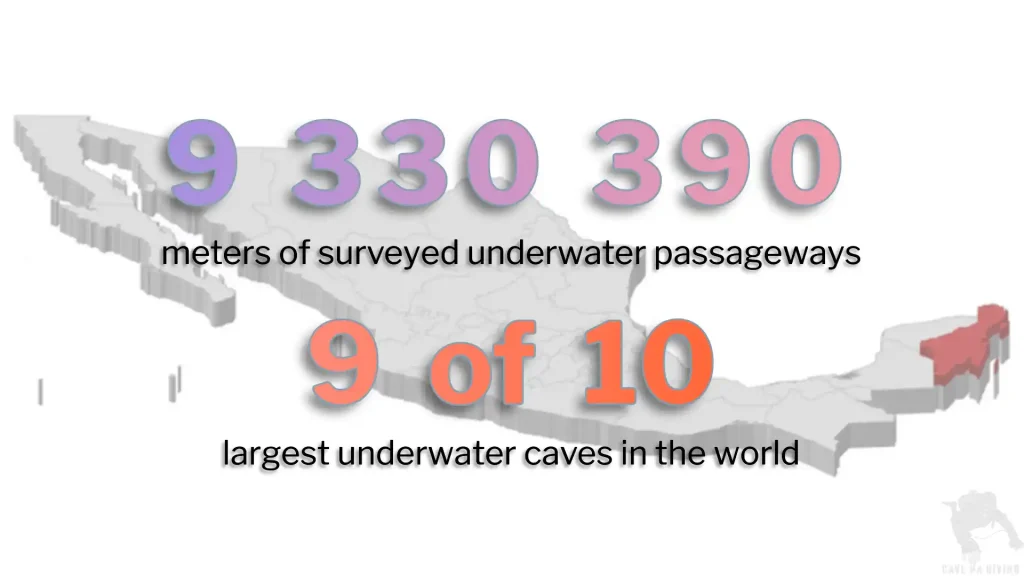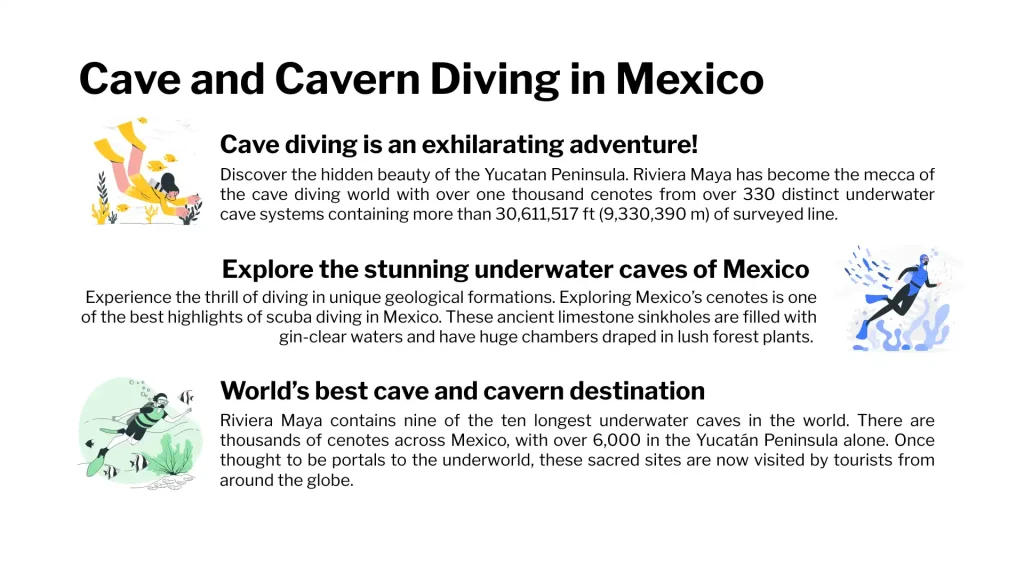"Bringing the experience of organizing and hosting the Olympic Games into diving operations and customer satisfaction"

“Both in cave diving and in life, the darkness of uncertainty was beckoning. I was scared, but I knew that if I could be brave enough to step over the brink into the blackness, my eyes would adjust and new possibilities would be revealed.”
—Jill Heinerth, Into the Planet:
My Life as a Cave Diver
9 of 10 world’s biggest underwater caves are here


Why Cave Ha Diving?


Turnkey dive trips
We specialize in arranging complete diving trips, including:
- transfers from Cancun International Airport;
- accommodation in comfortable, divers-friendly hotels in Playa del Carmen of your choice;
- car excursions with experienced guides to the most exciting sights of the Yucatan Peninsula;
The full range of diving products and services
Recreational diving experience
- guided tours in the cenotes of the Rivera Maya with a cavern zone for recreational certified divers (OWD, AOWD, and above);
- guided ocean diving on Playa del Carmen and Cozumel island reefs;
- the unique “Treasure of the Mayan Abyss: The Underwater Quest” experience for recreational divers;
- full range of recreational scuba diver courses from Discover Scuba diving experience to Open Water Course, Referral Open Water, Advanced Open Water, Nitrox and other diver specialties, Rescue diver, up to Divemaster and IA.
- full range of equipment rentals required for recreational diving.
Technical and Full Cave diving experience
- full cave guided diving tours in the hundreds of Rivera Maya caves for cave-certified divers;
- technical decompression guided diving tours on Playa del Carmen and Cozumel island reefs for technical certified divers;
- Rebreather guided cave diving tours in Rivers Maya caves and ocean for Rebreather certified divers;
- full range of technical and cave diving courses from TDI Intro to Tech/IANTD Essentials diver, Sidemount, and DPV courses to Technical Decompression Diver and Technical Cave diver courses, utilizing the full range of gas mixes up to 100% oxygen and helium for deep and decompression diving.
- full range of technical and cave equipment rentals, DPV rentals, FATHOM mCCR rentals, and others.
Gases
- Standard EAN32 mix;
- Deco EAN50 and O2 100%;
- Any Trimix mixes;
- Tank rentals;
- Sofnolime
Service
Maintenance and repair
- Halcyon, Scubapro, SUEX, and APEX diving equipment;
- Drysuit water leak testing and repair; zip, cuffs, and neck replacement
Shop
On-site essential dive shop
- Halcyon, Santi, Fourth Element, DUI and SUEX equipment;
- Diver essentials for recreational, technical and cave diving
Over the years, we have gained extensive experience working with tourist groups.
Would you be interested in knowing more about your group flight, crossing the border in Mexico, accommodation, and other local information? We’ll gladly share our deep local knowledge with you.
We will provide your clients with everything they need to feel comfortable and safe during their unbelievable holidays at our friendly and welcoming resort in the heart of the Caribbean.
Become a Cave Ha Diving partner now

About Alexander
Alex is a true cave diving enthusiast, Cave Ha Diving Mexico founder and owner, IANTD IT with the following IANTD/TDI/SDI ratings: Advanced Cave DPV Instructor / Advanced Cave Stage – Multi-stage Instructor / Advanced Cave Sidemount & No Mount Instructor / Advanced Cave Survey Instructor / Technical Cave Instructor, Trimix Instructor, IT, OWSD Instructor, GUE Member, GUE Cave 2 / GUE Cave DPV / GUE CCR 2 / GUE CAVE CCR / GUE TEC 2 / TDI ER/Trimix, mCCR Fathom, mCCR GBM, eCCR JJ, RYA Skipper
Before fully dedicating himself to the diving industry, Alexander served many years as Executive Vice-President for Technology, Broadcasting and Press Operations, Medical and Anti-Doping, Accreditation of the Olympic and Paralympic Games Organizing Committee; President of iTeco International Ltd, Chairman of Board iTeco LLC; Chairman of Expert Board of Bigitex consulting company (finance and IT technology); First Deputy of the Chairman of the Board of Banking Organisation “Inkakhran” and College Professor (Broadcasting and Information Technology).
Chevalier of the orders: Silver Olympic Order and National Order “For Merit to the Fatherland”









